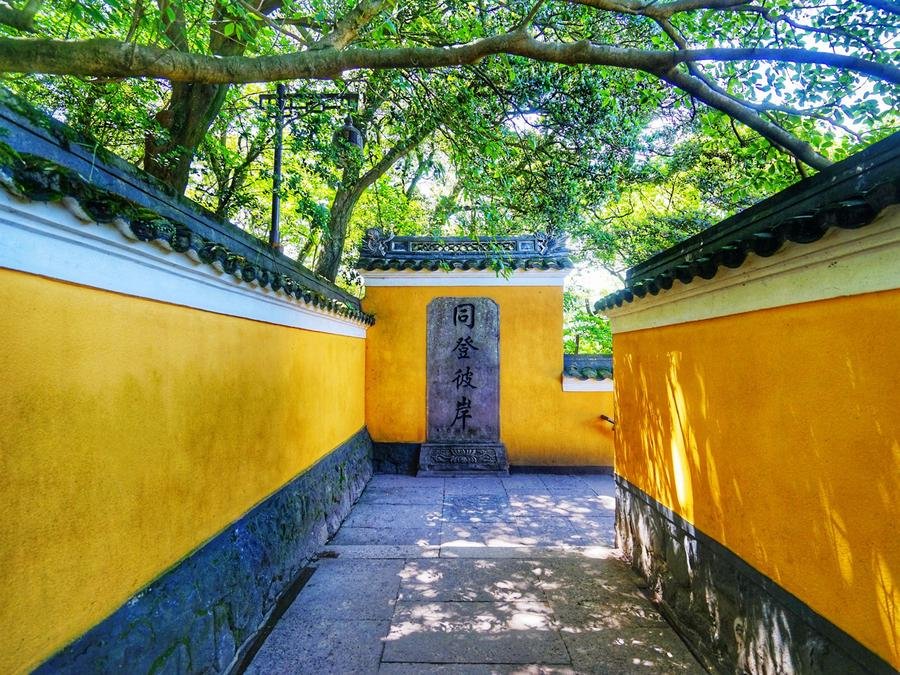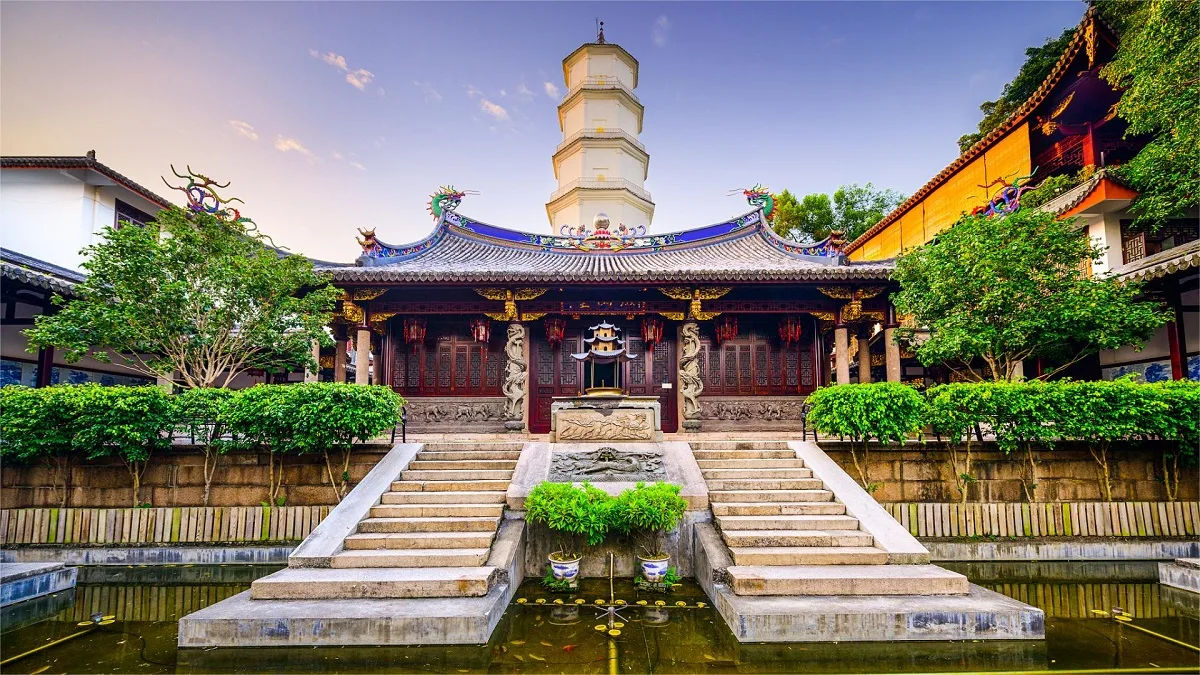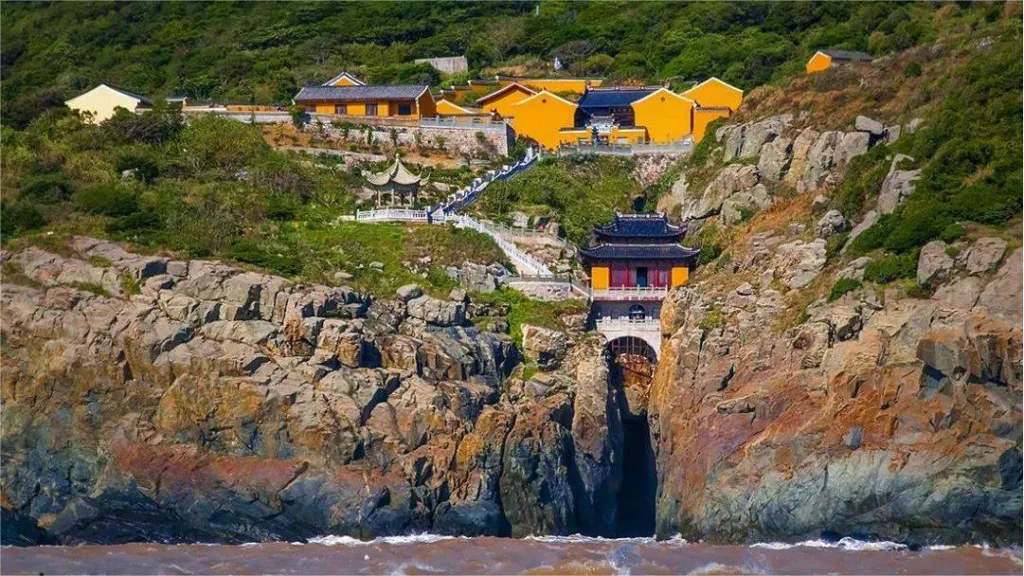Huiji Temple (慧济寺), an iconic Buddhist sanctuary, is nestled on Foding Mountain within the renowned Putuo Mountain in Zhejiang Province, China. Established in the Ming Dynasty (1368-1574) by the monk Yuanhui, the temple covers an expansive area of 20 acres with a built-up area of 3,300 square meters. The temple’s history is rich and storied, reflecting the profound cultural and spiritual heritage of Chinese Buddhism.
The origins of Huiji Temple date back to the Ming Dynasty when it was first founded by Yuanhui. It underwent significant expansion during the Qing Dynasty. In the 58th year of Emperor Qianlong’s reign (1793), the monk Nengji transformed the humble hermitage into a full-fledged temple. Further enhancements occurred in the 33rd year of Emperor Guangxu’s reign (1907) when the monk Dehua procured the sacred Buddhist scriptures known as the “Tripitaka.” The temple was endowed with royal gifts, including the prestigious blue dragon bowl and jade seals, elevating its status alongside the prominent Puji and Fayu temples.
Table of Contents
- Basic Information
- Location and Transportation
- Highlights of Huiji Temple
- Other Attractions on Mount Putuo
Basic Information
| Estimated Length of Tour | 1 hour |
| Ticket Price | 5 RMB |
| Opening Hours | 6.00 – 18.00 |
| Telephone Number | 0086-0580-6690126 |
Location and Transportation
Huiji Temple is situated on Foding Mountain within Putuo Mountain in Zhoushan City, Zhejiang Province, China. To reach the temple, visitors can take the scenic bus line 2 from the Putuo Mountain Wharf terminal to the final stop, “Cable Car Station.” From there, a cable car ride will take you up the mountain directly to Huiji Temple.
Highlights of Huiji Temple
Architectural Splendor

Huiji Temple’s architecture is unique, arranged horizontally to harmonize with the mountainous terrain. The buildings are spacious and magnificent, deeply embedded within a lush forest, offering an ambiance of serene seclusion. The main hall, Mahavira Hall, is distinctively adorned with colorful glazed tiles in shades of sky blue, light green, pale yellow, and purple-red, creating a stunning spectacle of “Buddha’s light” under the sun.
Unlike other temples on Putuo Mountain, the Mahavira Hall houses a statue of Shakyamuni Buddha, flanked by his disciples Ananda and Kassapa. The hall also features twenty celestial guardians (the “Twenty Devas”) and a thousand-armed wooden Guanyin statue. The hall’s roof, with its vibrant glazed tiles, reflects a spectrum of colors, enhancing the temple’s ethereal beauty.
Sacred Artifacts and Structures

Huiji Temple is home to several precious imperial seals. These include a gold seal bestowed in the 60th year of Qianlong’s reign (1795), inscribed with “Imperially Established Nanhai Putuo Guanyin Precious Seal,” a jade seal granted in the first year of Emperor Jiaqing’s reign (1796), and a copper seal from the 33rd year of Emperor Wanli’s reign in the Ming Dynasty (1605). These seals symbolize the temple’s historical importance and royal patronage.
Adjacent to the main hall is a bell tower, characterized by its double-eaved hip roof and housing a large bronze bell. Below the bell is a statue of Ksitigarbha (Dizang), the Bodhisattva of the afterlife, with a ladder behind it for visitors to climb and ring the bell.
Modern Enhancements

In 1989, the temple underwent further embellishments with the installation of a meticulously crafted 2.7-meter-tall Guanyin statue. Additionally, 123 stone-carved Guanyin images were embedded into the walls, showcasing the artistry of renowned painters from the Tang, Song, Yuan, Ming, and Qing dynasties. These carvings, created by contemporary master sculptor Huang Liangqi, depict various manifestations of Guanyin, each unique and exquisite, representing the pinnacle of Putuo Mountain’s Buddhist artistry.






